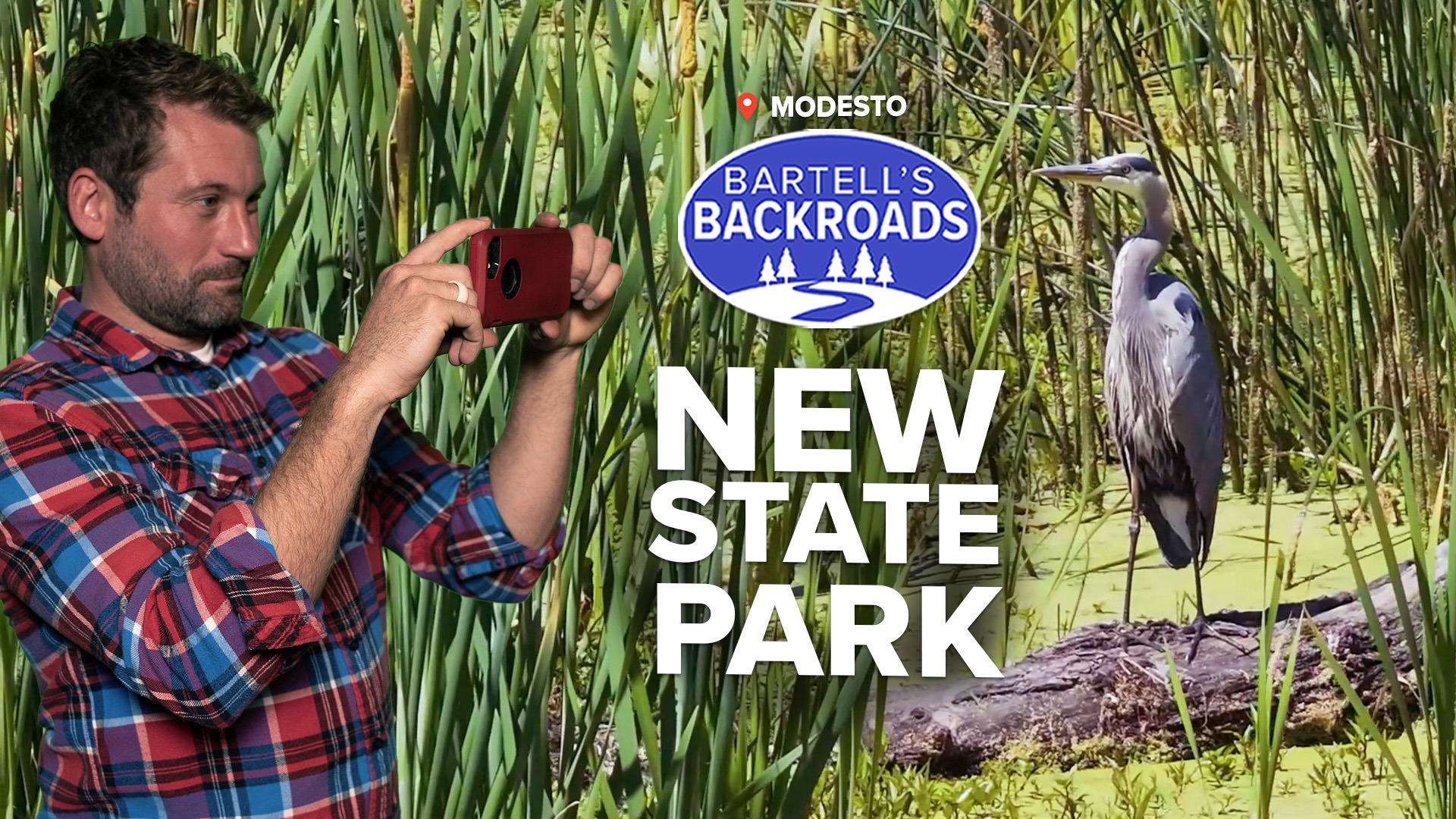MODESTO, Calif. — “I love being out here, especially just being able to walk out here by myself and seeing all the trees sway and hearing all the birds. You truly feel like you’re disconnected from anything outside of this,” said California State Parks interpreter Ali Manzo. "There aren’t any cars out here and all you really hear is the sound of nature."
Manzo is standing just 12 miles west of Modesto, where the Tuolumne and San Joaquin rivers meet. It's where you'll find California’s newest state park, Dos Rios.
"It’s called Dos Rios because we have the confluence of the two rivers. Dos Rios in Spanish means ‘Two Rivers,’” she said.
Dos Rios is now one of the largest state parks in the Central Valley, spanning 1,600 acres, most of which is not accessible by car. Manzo makes do with a bike.
“It is my preferred method of getting around," she said.
Manzo is a bilingual interpreter at Dos Rios. The state park may be new, but she is very familiar with the land.
“I actually started my journey at Dos Rios back in 2015, so almost 10 years ago. I volunteered with Tuolumne River Trust and worked closely with River Trust and planted some of the native trees you will see in the park,” she said.
Before it was a state park, Dos Rios was a ranch. The crops here grew along the river, blending in with the surrounding Stanislaus County almond orchards and hay fields.
“Before all that it was a flood plain, so we are doing a little time traveling in a sense. We went from flood plain to ranch, then back to flood plain,” said Manzo.
Flood plains are extremely important in the Central Valley. The plants and soil in these areas hold or absorb excess water and prevent flooding in towns or cities.
“You can think about it like a big sponge,” said Manzo.
TAKE A TRIP ON BARTELL'S BACKROADS:
► See an interactive map of everywhere John has visited on the backroads
► Watch all of the Backroads videos
► Follow John on Facebook
Many farmers remove native plants and grow crops on flood plains because the soil quality is really good, but farmland doesn’t do a good job of holding back flood waters.
“In this area that we are standing in, it can flood up to 8 feet, so over our heads,” she said.
Reverting the old Dos Rios ranch farmland back into a flood plain was a 10-year project put on by nonprofits River Partners and Tuolumne River Trust. Not only is the land absorbing more water, but it has created homes for endangered animals, like the Riparian Brush rabbit.
“We say 'RBR.' There used to only be four places where you would find the RBR and now we are the fifth,” said Manzo.
A whole slew of animals now calls Dos Rios home, and when state parks took over the property, they wanted to open it up to locals. That is important because, though this area is surrounded by agriculture, the San Joaquin Valley has lowest number of public green spaces per capita in the state.
“Especially here in the Central Valley there are certain demographics that haven’t had access to spaces like this, and I feel really lucky to be one of the bilingual interpreters here. I can translate things into Spanish for them," said Manzo.
As the park grows, the biking and hiking trails will expand. Eventually boat ramps and fishing areas will be added, but if you want to see the park in its rawest form, now is the time to explore.
MORE STATE PARK ADVENTURES ON THE BACKROADS: California state parks you need to visit.



















